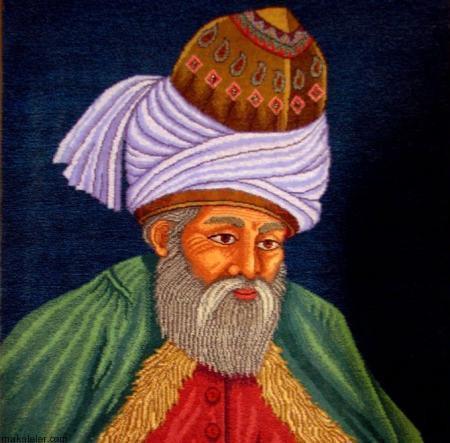Rumi an ‘architect’ of peace in Anatolia
KONYA

Mevlana Jalaluddin al-Rumi, a Sufi mystic and Islamic scholar who is today revered in Turkey as a spiritual pioneer, was one of the “architects” of centuries of peace and tranquility in Anatolia.
“Throughout our history, peace and tranquility has prevailed in Anatolia, the cradle of civilizations. Spiritual architects like Mevlana have a big share in this,” Konya Mayor Yakup Canbolat said on the first day of events commemorating the 13th century philosopher in the Central Anatolian province.
On the 744th anniversary of his death, Mevlana is being commemorated at his burial place in Konya in a ceremony known as Seb-i Aruz or “reunion with the Beloved.”
Centered around the theme “Time of Brotherhood,” this year’s celebrations are taking place between Dec. 7-17.
Beginning with a visit to the tomb of Shams Tabrizi and the “Brotherhood March,” the events continued with a Sema ceremony in the Mevlana Whirling Dervish Hall and later a Gulbang, or traditional collective prayer.
“We think that differences among us are our richness. Putting all differences aside, we call on the whole world: It is a time of brotherhood,” Canbolat said, stressing the “constructive” and “unitary” messages of Mevlana.
As part of the events, the 4th International Mevlana Symposium was held at Konya’s Seljuk University on Dec. 8.
Speaking at a symposium titled “Mevlana and Brotherhood in the Muslim World,” Emrullah İşler, an Ankara deputy of the ruling Justice and Development Party (AKP), underscored Mevlana’s status as a role model.
“During these days of need for brotherhood and unity, the leadership of people like Mevlana will enlighten our road and help us solve the problems we face,” İşler said.
The 10-day ceremony covers more than 1,300 programs including international symposiums, exhibitions, workshops, auditions, meetings and a Mevlana movie screening.
Mevlevi Ayin-i Sherif, a “whirling” act accompanied by music and characterized by certain rules, is also being observed during the Seb-i Aruz ceremony.
For the first time as part of the international commemoration ceremony, visitors will be able to view an exhibition called “derviş çeyizi,” or dervish dowry, which displays the clothes of many dervishes from throughout history.
The program also includes Mesnevi lectures in Turkish and English.
The final day of festivities, marking the night of Rumi’s “reunion with the Beloved,” will be attended by artists, scientists and Rumi lovers from Turkey and abroad.
















